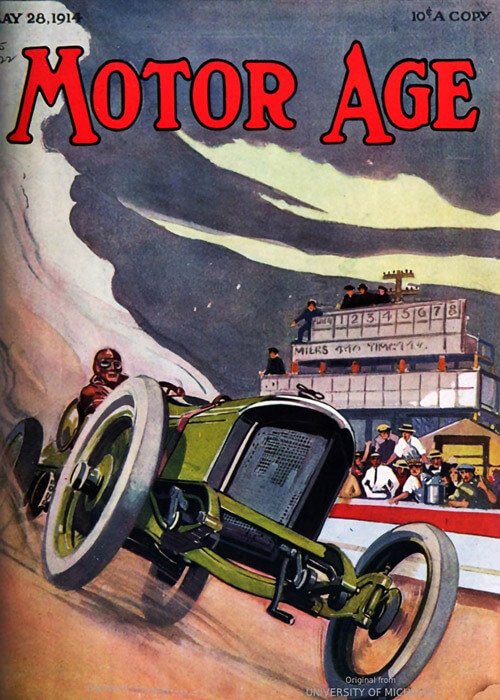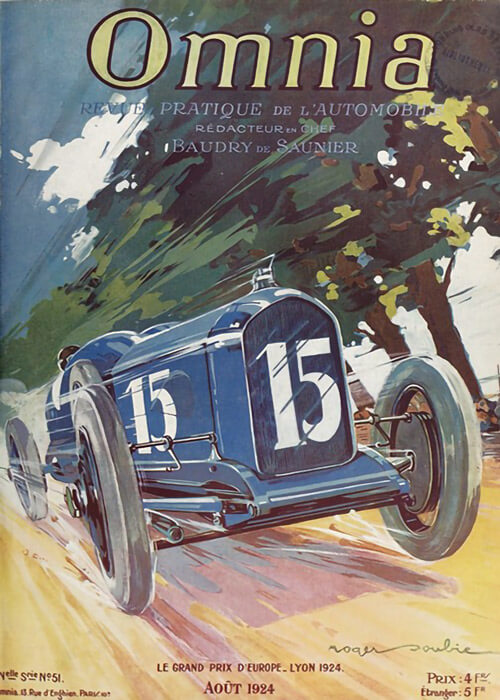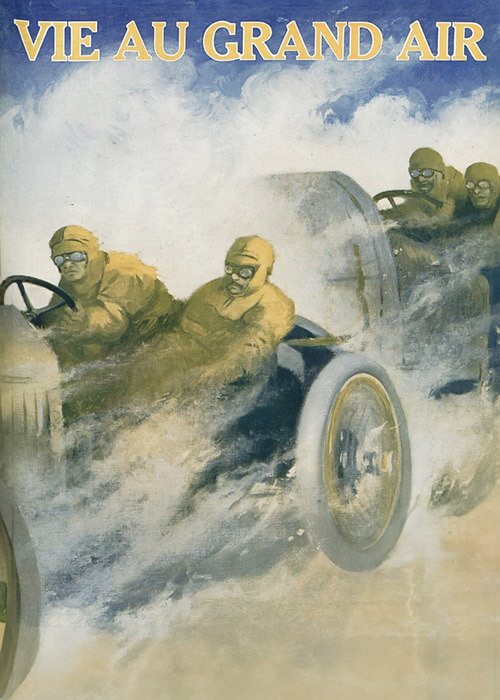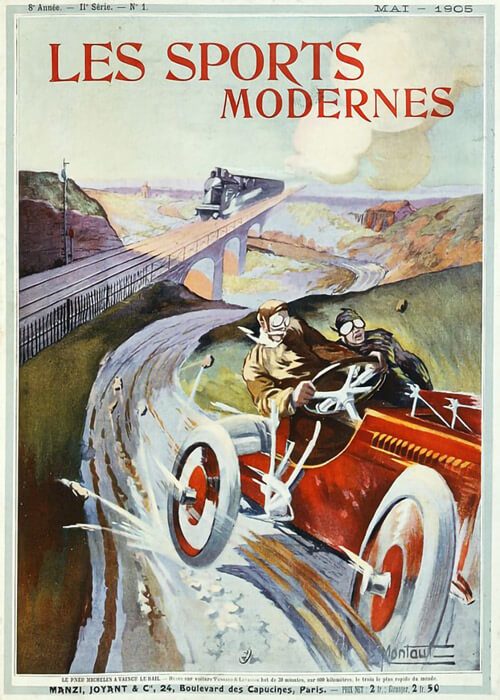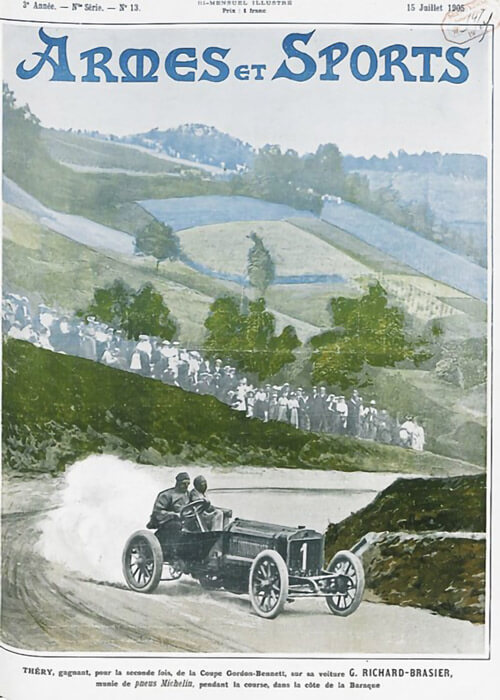The 1919 Liberty Sweepstakes: the first 500’er after a two year hiatus
Once America got involved in the Great War in April 1917, the owners of the Speedway offered the facilities to assist in war efforts: the Speedway became an airfield. The ownership of the track changed a bit after one of the four founders (Frank Wheeler) was forced to bow out of the operation.
Within the Indy 500-history, some years are remembered as one better to be forgotten. Especially 1919 is one of those and for good reasons too, as we shall see. The first “500” after WWI saw controversies, from the day it was announced to be held. Eventually it was held the day after Memorial Day, May 31st and about the classic 500-mile distance. Practice started May 1st, qualifying was on May 27th, 28th and 29th.
A lot of the more than 40 cars entered, were late arrivals and they were not helped with 4 of all 9 practice days that were affected by rain in the week before qualifying. A full field of 33 cars surpassed the minimum speed of 80 mph. For the first time ever, an Indy starting field contained this number of starters.
There was a lot of interest from foreign drivers; even two European constructors intended to make their debut at the Speedway: Sunbeam and Ballot.
The Sunbeam team found out that their engines were too large and had to withdraw.
The French Ballot company was brand new in the racing car business, making use of the services of Ernest Henry, one of the four original Peugeot “Charlatans”, the man who designed the Peugeot DOHC engines. Now a Straight-Eight engine! The Ballots were designed and built from December 1918 on in some 100 days! Although brand new, the Ballots were fast, the two fastest cars qualified on pole and third place.
One name missing from the starting field was Eddie Rickenbacker. The former driver had gained fame as a airplane pilot and became a well-known highly decorated Flying Aces. Missing from the field, Rickenbacker was still found on the grid! He was the assigned referee that day. Yet another step for his Speedway career, little did everyone know that there was much more to come for him.
The dramas that make the year 1919 at Indy so infamous happened on Race Day. Despite a number of well-known veterans in the race, there were no less than 19 rookies in the starting field. Two of them even never drove on Indy. Arthur Thurman was fatally injured when crashing in lap 45. Then, 51 laps later Louis leCocq and his riding mechanic Robert Bandini crashed and got trapped underneath their upside-down lying car that went ablaze. They had no chance of surviving this fiery ordeal. Ironically, both fatal accidents happened with Duesenbergs.
Ralph DePalma, driving a V12 Packard, saw yet another “500” victory slip through his fingers. After dominating the first half of the race, troubles took him out of contention. The fast Ballots suffered from tire troubles, leaving a 4th place as their best classification.
Several of the prewar Peugeot cars and the Premier branded copies were still used. Howard Wilcox drove one of them to victory in a race which saw three men killed, making the 1919 Race Day at Indy one of the deadliest races of them all.
The inferno of 1964 is often recalled as one of the most gruesome scenes ever at IMS; the 1919 inferno has been almost lost in time, not to mention the catastrophic first Indianapolis races in 1909 that were no 500’s however. The amount of visual evidence of 1964 compared with the lack of that from those early races, is most definitely a factor.
But 1919 might well be remembered for one feature. One engine innovation out of WW1 was the further development of the Straight Eight engine. Ballot introduced this engine concept at Indianapolis in 1919. It was the starting sign for what eventually would lead to the birth of some of the most legendary engines of American origin in racing history. YKW
Indianapolis 500 - 1919
The Horseless Age
- And what about Racing in 1916? - under construction
- Thirty Entries for Hoosier Race - under construction
MoToR
- What of Racing? - under construction
Motor Age
- Drivers Tune up for Race, Ballot Eight vary fast - to come
- Sunbeam Designer Talks on Racing - to come
- Peace Lifts War's Pall on Racing - to come
- Racing Drivers and Their Past Performences - to come
- Race is Plea for Smaller Cars - to come
- The Race from the Pits - to come
The Motor World
- Peugeots Run One, Three in Victory Swepstakes - to come
The Motor Way
Automotive Industries (The Automobile)
- 22 Indianapolis Entries so far, Indianapolis Entry List - to come
The Automobile Journal
- Ready for Sweepstakes at Indianapolis - to come
- Three killed as Wilcox Wins Sweepstakes - to come
- Rickenbacher's Graphic Story of Great Race - to com
Automobile Topics
- Resta Wins Memorial Race - under construction
La Pratique Automobile
- Une Victoire Francais - under construction
La Vie au Grand Air
- Le Succès de l'industrie francaise - to come
- Une Grande Victoire Francaise - to come
Automobilia
Sporting, Journal Sportif Illustré
Le Sport Universel illustré
Le Monde illustré
La Vie illustré
Armes et Sports
La Stampa Sportiva
L'Illustrazione italiana
Allgemeine Automobil=Zeitung
- Das Indianapolis-Rennen - to come
